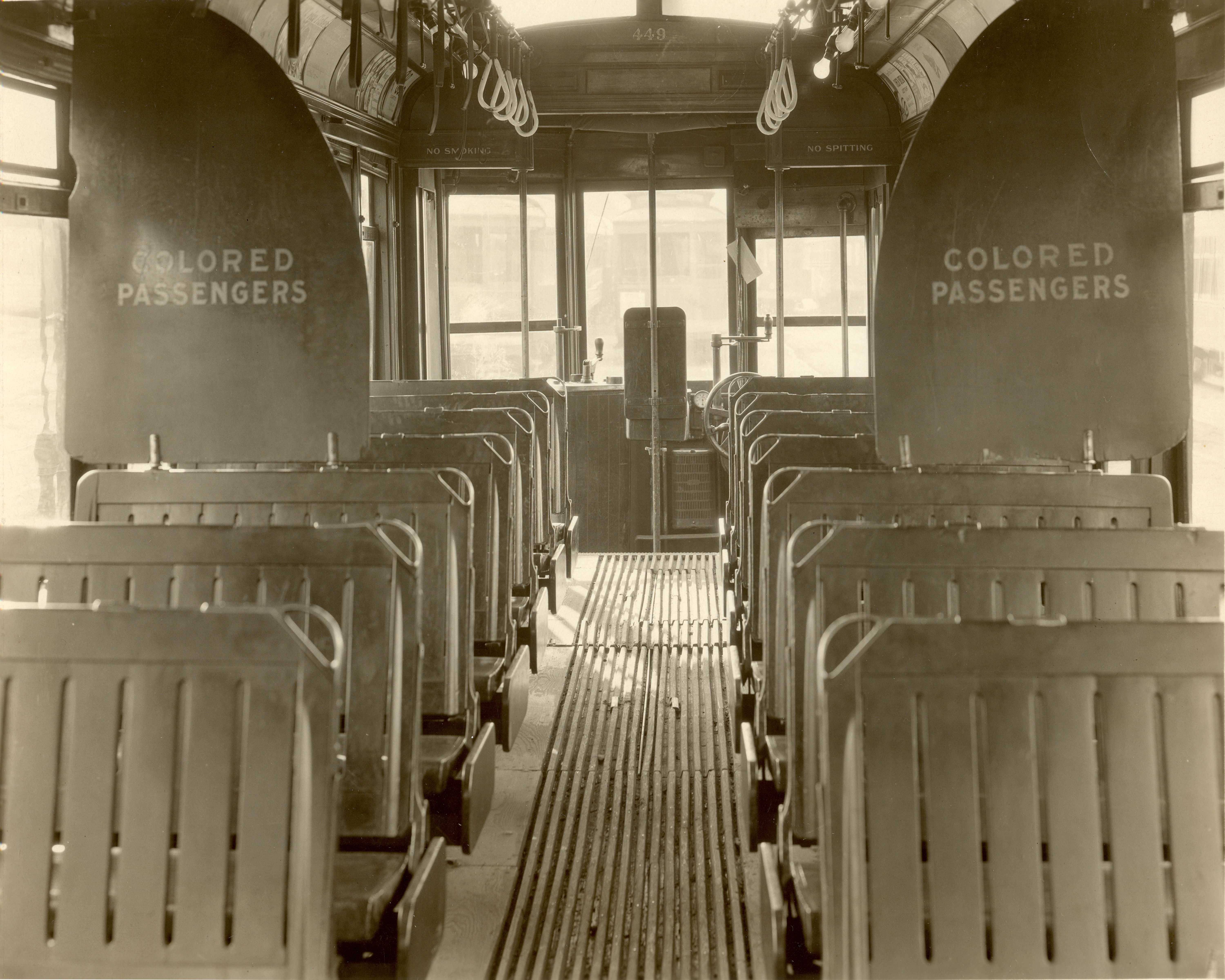
Chapter 2
Creating Jim Crow
Jim Crow laws created the legal separation between white and Black America. Built on Black Codes from the 1800s, the laws dictated where African Americans could go to school, sit on trains, eat in restaurants, drink at water fountains, and use library books. In order to justify segregation, negative stereotypes of African Americans filled the media, advertisements, and even household products. Individual, community, and state-sponsored violence was used to enforce Jim Crow laws. Jim Crow laws remained in effect until the passage of the 1964 Civil Rights Act.
Codifying Segregation
In 1892, Homer Plessy of New Orleans, Louisiana, volunteered to test the legality of railroad car segregation. He sat in a “whites only” railroad car, refused to move to a segregated car, and was arrested and charged under Louisiana’s Separate Car Act. The case eventually reached the U.S. Supreme Court, which ruled that segregation was legal as long as accommodations were separate but equal. The ruling upheld segregation laws for more than 50 years, even though separate facilities were rarely equal.
Challenging Segregation in Louisiana
Daniel Desdunes was a member of the Comité des Citoyens.
Homer Plessy was born free to French-speaking Creole parents in New Orleans. By the 1860s, Black people in Louisiana had gained rights and freedoms, with integrated schools and neighborhoods, access to public transit, poll tax voting, and the right to hold public office. But after the withdrawal of federal troops in 1877, many of those rights were taken away. As a result, Plessy and other citizens became politically active. Plessy helped create the Comité des Citoyens (Citizens Committee) in New Orleans and volunteered to test the legality of Louisiana’s Separate Car Act by purchasing a “whites only” ticket and boarding a segregated railcar.
“Separate but Equal”
Justices of the U.S. Supreme Court, 1896
Plessy v. Ferguson court document
John Ferguson was the New Orleans judge who originally ruled against Homer Plessy. After Plessy appealed, the case reached the U.S. Supreme Court, and in 1896 the Court ruled in a 7-1 decision that state-sponsored segregation did not violate the 14th Amendment.
The Court maintained that segregation was legal as long as accommodations were separate but equal. John Marshall Harlan was the only dissenting justice in Plessy v. Ferguson. He feared the decision would harm African Americans.
Written into Law
Jim Crow laws turned racial traditions into legal statutes. A majority of states, in both the North and South, developed laws enforcing segregation. The map below provides a small sample of Jim Crow laws. These laws placed restrictions on voting, required segregated transportation, and limited access to education. Many states also prohibited miscegenation—marriage or romantic relationships between different races of people. African American living in states that did not pass segregation laws still faced violence and discrimination.

The arbitrary separation of citizens, on the basis of race … is a badge of servitude wholly inconsistent with the civil freedom and the equality before the law established by the Constitution.
Justice John Marshall Harlan, dissenting opinion in Plessy v. Ferguson, 1896
